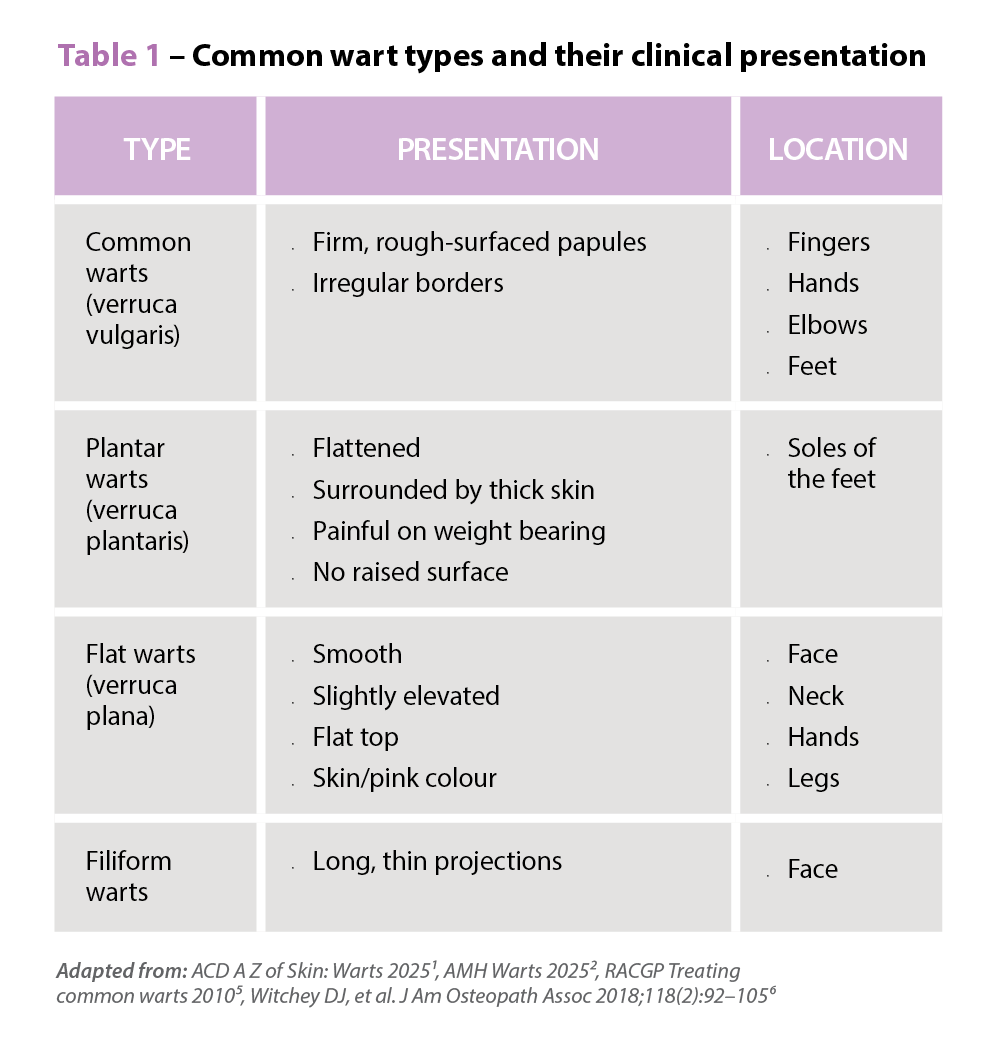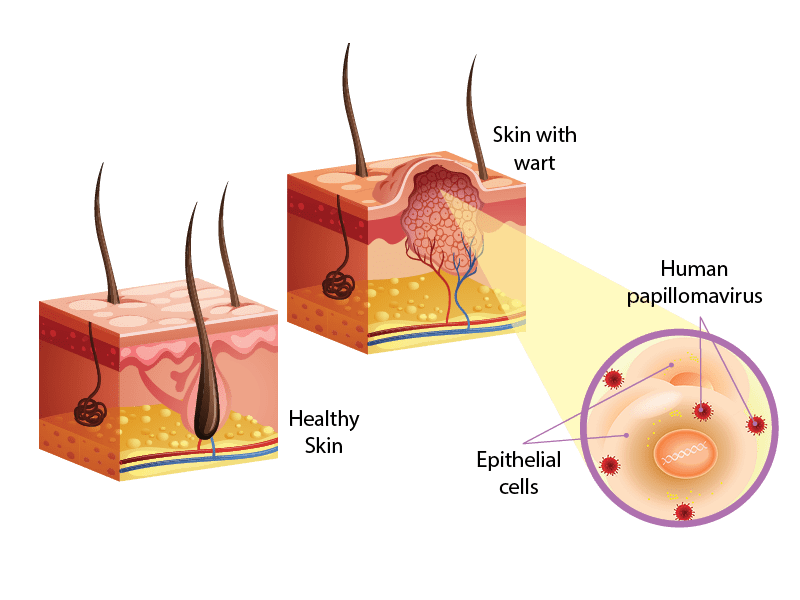| Preventive Health Series
This is the first of Australian Pharmacist’s preventive health series. This series, from expert opinion leaders, will examine emerging preventive health challenges in Australia and the role of pharmacists in effectively responding to them. |
What are the emerging needs of consumers living with mental illness, and how will pharmacists meet this need?
Mental health and substance use disorders are among the five leading causes of disease burden in Australia.1 Suicide is the leading cause of death among Australians aged 15–44 years, accounting for 36% of deaths among people aged 15–24 and 31% of deaths among people aged 25–34 years.2 People living with mental illness die younger and their life expectancy can be up to 30% shorter than the general population, often due to co-morbid physical illnesses resulting from modifiable risk factors.3–5
So, it is no surprise that Australia’s Long Term National Health Plan, specifically focuses on ‘mental health and preventive health’ as one of four key pillars requiring reform.6 It is now more important than ever to recognise, develop and remunerate pharmacists’ roles in mental health care including suicide prevention, medicines safety, screening and the management of co-morbidities.
Suicide prevention
Suicide rates have increased in Australia in recent years2; therefore, suicide prevention is also a focus of the Long Term National Health Plan, which aims to ‘build the world’s best health system’.6
Pharmacists are primary health care professionals whose roles in suicide prevention, assessment, and care are increasingly being recognised and explored.7–11 Approximately 85% of pharmacists have cared for patients at risk of suicide.12 Suicide education and training for primary health care professionals is often lacking in curricula.13,14
When this is paired with the fact that 45% of people who died by suicide had seen a primary health care professional in the month prior to their death,15 we can start to understand why these deaths were not prevented. In fact, it is more common for people who die by suicide to have contact with primary health care than mental health services within the year of their death.15 Hence, there is a pressing need to build pharmacists’ capacity and skills in this area.
Specific training, education and assessment programs are needed to prepare primary health care professionals to recognise, assess and care for people at risk of suicide.16 Suicide prevention education, training and assessment needs to be delivered in a consistent manner to all pharmacists to enable them to confidently contribute to the health system and to ensure they are well-prepared to assess and assist people experiencing mental health problems and crises.
Mental Health First Aid (MHFA) training, which is recommended for pharmacists to complete, teaches participants how to approach, assess and assist people experiencing mental health problems and crises, including suicide.17,18
However, it is not mandatory for Australian pharmacists to complete such training and the cost is often borne by the individual pharmacist. MHFA training and assessments have been integrated into the curriculum in some pharmacy schools10,19,20; however, this is not universal across Australian pharmacy curricula. On the other hand, there is consistency in physical first aid training, in that all pharmacists must complete a physical first aid course to meet the requirements for initial general registration.
The National Australian Pharmacy Students’ Association also endorses the need for a minimum standard of mental health education for all pharmacy students and supports the roll-out of mandatory MHFA training.21 We must ensure that all pharmacists receive a consistent, minimum level of education in this area, such as MHFA training, to ensure they are able to care for people at risk of suicide. Similar to physical first aid training, the Pharmacy Board of Australia should consider whether MHFA training should also become a requirement for Australian pharmacists seeking general registration.
Medicine Safety
The Council of Australian Governments (COAG) has given Medicines Safety and the Quality Use of Medicines National Health Priority Area status.22 COAG also recognises that mental health is a priority area and that barriers to care need to be removed to ensure a ‘seamless integrated mental health system’.23 This cannot be achieved without recognising and supporting the integral role of pharmacists in mental health care.
When a person is diagnosed with a mental illness, they may require pharmacological, as well as psychological therapies. In 2017–2018, 37.7 million mental health-related prescriptions were dispensed in Australia.24 Adherence to antidepressants and antipsychotics is of utmost importance to ensure treatment efficacy, to minimise withdrawal symptoms and to reduce the risk of relapse. Pharmacists are medicine experts and can optimise medicines use through patient and caregiver support. They can also help detect and manage the many adverse effects of antipsychotic medicines, such as dry mouth, constipation and excessive perspiration, which can reduce tolerability and impact adherence.
Each time one of the 37.7 million mental health-related prescriptions is dispensed, there is an opportunity for pharmacists to recognise the signs and symptoms of mental health problems and crises, to assess for suicide, and to apply MHFA, when needed. This is of utmost importance given that 87% of suicide deaths occur among people living with mental illness25 and that medicines may be used by people to self-harm or attempt suicide.26,27 As the gatekeepers of medicines, pharmacists are in an ideal position to ensure the safe and appropriate use of medicines, thereby also contributing to suicide prevention.
The Medication Safety in Mental Health Report recommends that clinical pharmacy services be adapted for mental health settings to improve medicine safety.28 It also highlights that ‘integrating clinical pharmacy services within the mental healthcare setting’ is a high priority action area, which is in line with pharmacists’ expanding roles in general practice.28
As integral members of the mental health care team, pharmacists can ensure the continuity of care by discussing patients’ concerns and facilitating medicine changes. Pharmacists also have important roles in the transition of care by providing hospital and community-based services, such as medication reconciliation and post-discharge MedsChecks.29
Mental health screening
The majority of Australians do not seek help for their mental health symptoms.30 And symptoms of common mental illnesses, like depression and anxiety, may include fatigue, lack of energy and weight changes, which may result in a visit to the pharmacy about over-the-counter products to alleviate them. Pharmacists are also often aware of the medical and social histories of their regular patients, which may include risk factors for mental illnesses. Pharmacists, furthermore, are highly accessible primary health care professionals, with evidence to demonstrate that they see patients 1.5–10 times more frequently than doctors.31
Thus, they are in an ideal position to contribute to the early detection of mental illnesses through screening. There are several screening tools validated in primary health care settings, which can be used to screen people for mental illnesses, such as depression.32 Depression screening by pharmacists is well-received by patients33 and pharmacists are able to use brief screening tools for depression and appropriately refer consumers when needed.34,35 Although evidence in this area is emerging, it is not routine practice yet.
As outlined in the Pharmacists in 2023 report, the early detection of illnesses, such as anxiety and depression, is a patient-level activity that is part of pharmacists’ current roles, but must evolve as pharmacists’ roles in ‘referral through formalised patient consultations’ expand.36
Appropriate referral pathways and systems need to be in place for those at risk to be referred to the next point of care, where diagnosis, treatment and follow-up can occur.37 Pharmacists’ current and emerging roles in screening for mental illnesses and the need for further research in this area have been recognised by both national and international publications, such as PSA’s Framework for Pharmacists as Partners in Mental Health Care and the International Pharmaceutical Federation’s (FIP) Focus on Mental Health Report.38,39
Mental Health First AidMHFA training teaches participants how to approach, assess and assist people experiencing mental health problems and crises, such as suicide and psychosis.18 The Standard MHFA training program is open to members of the general public. However, versions of the program tailored to specific audiences do exist, including MHFA for Pharmacy, which is accredited for 12 hours of Group 2 CPD credits. While it is not mandatory for Australian pharmacists or primary health care professionals to complete the MHFA training, national training by accredited instructors is available. The effectiveness of the training has been demonstrated among various populations including pharmacy students. |
Co-morbidities – the role of the pharmacist
People living with severe mental illnesses die 10–25 years younger than the general population, often due to preventable risk factors such as smoking which can ultimately lead to fatal conditions, such as cardiovascular and respiratory diseases.3,4,40,41 While only 13.8% of the general population smokes daily,42 people living with mental illness are 65% more likely to smoke.5 The Long Term National Health Plan aims to decrease smoking rates to less than 10% by 2025.6 Among people with a mental illness, this is also an important focus, as outlined by the Fifth National Mental Health and Suicide Prevention Plan.4
Antipsychotics are associated with significant adverse effects, including weight gain and metabolic syndrome which also contribute to the premature mortality of people living with mental illnesses.5 Pharmacist-delivered smoking cessation,43,44 weight management45,46 and diabetes care47 services are effective. However, there is a need to develop pharmacist-led preventive health services targeted towards people living with mental illness.
As outlined in Pharmacists in 2023, preventive health services are needed to unlock opportunities to better support Australians.36 These services will require appropriate recognition and remuneration from the health system.
In light of the government’s commitment to ‘investing in health and medical research’ – as part of the Long Term National Health Plan – preventive health services must be supported by research evaluating the impact of pharmacists’ expanding roles on health outcomes.6
International experiences
Policy makers, regulators and educational bodies from around the world are starting to recognise and evaluate the impact of pharmacists’ contribution to mental health care. In Nova Scotia, Canada, the Bloom Program, which started off as a pilot project evaluating the impact of community pharmacy-led support for mental health and addictions care, is now funded by the provincial government due to its positive impact on patient outcomes.48,49
Some of the outcomes of the Bloom Program included the resolution or improvement of the majority of medicine issues, improved access to care and increased options for help-seeking, especially among people in rural areas.50
In the United States (US), pharmacists in the state of Washington are required to complete mandatory suicide prevention training relating to screening, referral and assessment.51 While MHFA training is not compulsory for all pharmacists in the US, the Journal of the American Pharmacists’ Association recently published a letter encouraging all pharmacists to complete MHFA training.52 Furthermore, in response to the US Preventive Task Force recommendations for depression screening for adults, including perinatal women,53 the Depression Screening in Pharmacy study was funded by the Community Pharmacy Foundation in the US.54 This study demonstrated that pharmacist-led screening has the potential to save lives.55 It also demonstrated that adequate remuneration for depression screening by pharmacists led to a sustainable screening and follow-up care model.55
Life-threatening crisisIt is very important that a person having suicidal thoughts not be left alone. Keep the person safe through connecting to immediate professional care, such as a mental health crisis team, a hospital or the person’s own doctor.18 Suicide is a life-threatening crisis and it may be appropriate to call an ambulance to ensure the person receives immediate professional care.18 It is also beneficial to be familiar with mental health crisis telephone numbers if you are assisting someone experiencing a mental health crisis. Contact details for each service will differ, depending on the area and state in which you practice. National and state crisis numbers can be found at: www.safetyandquality.gov.au/our-work/mental-health/emergency-mental-health-contact-details Pharmacists need also to monitor their own mental health because caring for a person experiencing suicidal thoughts may be distressing. Support is available with Pharmacists’ Support Services – 1300 244 910. |
Conclusion
In Australia, many daily contributions of pharmacists across the country go unrecognised and unremunerated.
While some services are remunerated when they are documented as clinical interventions, MedsChecks and medication management reviews, there is a need to develop improved, integrated systems that facilitate the documentation and remuneration of pharmacists for their current and emerging roles in mental health screening and referral, suicide assessment and care, and targeted preventive health services.
While recent increased investment in the pharmacy workforce in mental health within aged care is encouraging, stronger policy and regulatory frameworks are needed to enable all pharmacists to practice with better support.
There is an immediate need to provide consistent mental health education for pharmacy students, practitioners and support staff. Furthermore, pharmacists’ current and emerging roles in mental health care need robust evaluation and quality frameworks. They should also be driven by sustainable remuneration models. If we are serious about building ‘the world’s best health system’6 the development, evaluation and remuneration of Australian pharmacists’ contribution to mental health care requires increased investment.
Mental health care for older AustraliansPharmacists’ roles are increasingly being recognised in mental health care for older Australians. The Royal Commission into Aged Care Quality and Safety Interim Report highlights the valuable role of pharmacists working in aged care to respond to the overuse of chemical restraint for managing behavioural problems associated with dementia.56 The Federal Government’s announcement of a $25.5 million investment in medication reviews and the quality use of medicines was a timely response.57 In community settings, pharmacists can also provide mental health care for older Australians by screening for mental illness, assessing for suicide and ensuring the safe and appropriate use of medicines. Pharmacists who want to learn more about mental health and ageing are encouraged to seek further education and training. At the PSA NSW Annual Therapeutic Update in March, 2020, multiple sessions are scheduled about depression across the lifespan and screening older Australians – all delivered by mental health experts. |
References
- Australian Institute of Health and Welfare. Australian Burden of Disease Study: impact and causes of illness and death in Australia 2015. Canberra: AIHW; 2019. At: www.aihw.gov.au/reports/burden-of-disease/burden-disease-study-illness-death-2015/contents/table-of-contents
- Australian Bureau of Statistics. 3303.0 – Causes of Death, Australia, 2017 Canberra: ABS; 2019 At: abs.gov.au/AUSSTATS/abs@.nsf/Lookup/3303.0Main+Features12017?OpenDocument
- Thornicroft G. Premature death among people with mental illness. BMJ 2013;346:f2969. At: www.bmj.com/content/346/bmj.f2969/rapid-responses
- Australian Government National Mental Health Commission. The Fifth National Mental Health and Suicide Prevention Plan 2017 At: apo.org.au/sites/default/files/resource-files/2017/10/apo-nid114356-1220416.pdf
- National Mental Health Commission. Equally Well Consensus Statement: improving the physical health and wellbeing of people living with mental illness in Australia. Sydney: NHMC; 2016. At: www.equallywell.org.au/wp-content/uploads/2018/12/Equally-Well-National-Consensus-Booklet-47537.pdf
- Australian Government Department of Health. Australia’s Long Term National Health Plan Canberra: Australian Government Department of Health; 2019 [24]. At: health.gov.au/sites/default/files/australia-s-long-term-national-health-plan_0.pdf
- Murphy AL, O’Reilly CL, Ataya R, et al. A survey of Canadian and Australian pharmacists’ stigma of suicide. SAGE Open Medicine 2019;7. At: www.ncbi.nlm.nih.gov/pmc/articles/PMC6350138/
- Murphy AL, Hillier K, Ataya R, et al. A scoping review of community pharmacists and patients at risk of suicide. Can Pharm J (Ott) 2017;150(6):366–79. At: www.ncbi.nlm.nih.gov/pmc/articles/PMC5661676/
- Murphy AL, Martin-Misener R, Kutcher SP, et al. From personal crisis care to convenience shopping: an interpretive description of the experiences of people with mental illness and addictions in community pharmacies. BMC health services research 2016;16(1):569. At: bmchealthservres.biomedcentral.com/articles/10.1186/s12913-016-1817-4
- Boukouvalas EA, El-Den S, Chen TF, et al. Confidence and attitudes of pharmacy students towards suicidal crises: patient simulation using people with a lived experience. Soc Psychiatry and Psychiatr Epidemiol 2018;53(11):1185–95. At: www.ncbi.nlm.nih.gov/pubmed/30155558
- Murphy AL, Ataya R, Himmelman D, et al. Community pharmacists’ experiences and people at risk of suicide in Canada and Australia: a thematic analysis. Soc Psychiatry and Psychiatr Epidemiol 2018;53(11):1173–84. At: www.ncbi.nlm.nih.gov/pubmed/29936597
- Murphy AL, O’Reilly C, Martin-Misener R, et al. Community pharmacists’ attitudes on suicide: a preliminary analysis with implications for medical assistance in dying. Can Pharm J (Ott). 2017;151(1):17–23. At: www.ncbi.nlm.nih.gov/pmc/articles/PMC5755823/
- Kassir H, Eaton H, Ferguson M, et al. Role of the pharmacist in suicide prevention: primely positioned to intervene. J Pharm Pract Res 2019. Epub 2019 Jul 10. At: onlinelibrary.wiley.com/doi/abs/10.1002/jppr.1552?af=R
- Boukouvalas E, El-Den S, Murphy AL, et al. Exploring health care professionals’ knowledge of, attitudes towards, and confidence in caring for people at risk of suicide: a systematic review. Arch Suicide Res 2019;11:1–31. At: www.ncbi.nlm.nih.gov/pubmed/30856366
- Luoma JB, Martin CE, Pearson JL. Contact with mental health and primary care providers before suicide: a review of the evidence. Am J Psychiatry 2002;159(6):909–16. At: www.ncbi.nlm.nih.gov/pubmed/12042175
- Gramaglia C, Zeppegno P. Medical students and suicide prevention: training, education, and personal risks. Front Psychol 2018;9:452. At: www.ncbi.nlm.nih.gov/pmc/articles/PMC5900055/
- Guthrey P. PPI increased requirements for eligibility: are you ready? Excellence 2013:5–8.
- Kitchener BA, Jorm AF, Kelly C, eds. Mental health first aid manual. 4th edn. Parkville, Victoria: Mental Health First Aid Australia; 2017. At: www.ncbi.nlm.nih.gov/pubmed/25914827
- O’Reilly C, Moles R, Boukouvalas E, et al. Assessing students’ mental health crisis skills via consumers with lived experience: a qualitative evaluation. J Ment Health Train, Educ Pract 2019;14(5):361–71. At: www.ncbi.nlm.nih.gov/pmc/articles/PMC5869753/
- El-Den S, Chen TF, Moles RJ, et al. Assessing mental health first aid skills using simulated patients. Am J Pharm Educ 2018;82(2):6222. At: www.ncbi.nlm.nih.gov/pmc/articles/PMC5869753/
- National Australian Pharmacy Students’ Association. Position statement: mental health first aid education. Alexandria, NSW: NAPSA; 2016. At: home.napsa.org.au/news/position-statement-mental-health-first-aid-education
- Cooke J, Chalmers J. Medicine safety announced as a National Health Priority Area Australia: Australian Pharmacist 2019. At: australianpharmacist.com.au/medicine-safety-announced-national-health-priority-area/
- Australian Government, Department of Health. Mental health a COAG priority 2019. At: health.gov.au/ministers/the-hon-greg-hunt-mp/media/mental-health-a-coag-priority
- Australian Institute of Health and Welfare. Mental health services in Australia. Mental health-related prescriptions. Canberra: AIHW; 2019. At: aihw.gov.au/reports/mental-health-services/mental-health-services-in-australia/report-contents/mental-health-related-prescriptions/prescriptions
- Arsenault-Lapierre G, Kim C, Turecki G. Psychiatric diagnoses in 3275 suicides: a meta-analysis. BMC psychiatry 2004;4:37. At: bmcpsychiatry.biomedcentral.com/articles/10.1186/1471-244X-4-37
- Cairns R, Karanges EA, Wong A, et al. Trends in self-poisoning and psychotropic drug use in people aged 5–19 years: a population-based retrospective cohort study in Australia. BMJ Open 2019;9(2):e026001. At: bmjopen.bmj.com/content/9/2/e026001
- Cairns R, Brown J, Wylie C, et al. Paracetamol poisoning‐related hospital admissions and deaths in Australia, 2004–2017. Med J Aust 2019;211(5):218–23. At: www.mja.com.au/journal/2019/211/5/paracetamol-poisoning-related-hospital-admissions-and-deaths-australia-2004-2017
- Roughead L, Procter N, Westaway K, et al. Medication safety in Mental Health. Sydney: ACSQHC; 2017. At: www.safetyandquality.gov.au/sites/default/files/migrated/Medication-Safety-in-Mental-Health-final-report-2017.pdf
- Bell S, McLachlan A, Aslani P, et al. Community pharmacy services to optimise the use of medications for mental illness: a systematic review. Australia and New Zealand Health Policy 2005;2(29):11. At: www.ncbi.nlm.nih.gov/pmc/articles/PMC1345690/
- Slade T, Johnston A, Teesson M, et al. The Mental Health of Australians 2. Report on the 2007 National Survey of Mental Health and Wellbeing. Canberra: Department of Health and Ageing; 2009. At: www.researchgate.net/publication/236611613_The_Mental_Health_of_Australians_2_Report_on_the_2007_National_Survey_of_Mental_Health_and_Wellbeing
- Tsuyuki R, Beahm N, Okada H, et al. Pharmacists as accessible primary health care providers: review of the evidence. Can Pharm J (Ott) 2018;151(1):4–5. At: www.ncbi.nlm.nih.gov/pmc/articles/PMC5755826/
- El-Den S, Chen TF, Gan YL, et al. The psychometric properties of depression screening tools in primary healthcare settings: a systematic review. J Affective Disord 2018;225:503–22. At: www.ncbi.nlm.nih.gov/pubmed/28866295
- O’Reilly CL, Wong E, Chen TF. A feasibility study of community pharmacists performing depression screening services. Res Social Adm Pharm; 2015;11(3):364–81. At: www.ncbi.nlm.nih.gov/pubmed/25438728
- Hare SK, Kraenow K. Depression screenings: developing a model for use in a community pharmacy. J Am Pharm;2008;48(1):46–52a. At: www.ncbi.nlm.nih.gov/pubmed/18192130
- Rosser S, Frede S, Conrad WF, Heaton PC. Development, implementation, and evaluation of a pharmacist-conducted screening program for depression. J Am Pharm;2013;53(1):22–9. At: www.ncbi.nlm.nih.gov/pubmed/23636152
- Pharmaceutical Society of Australia. Pharmacists in 2023: for patients, for our profession, for Australia’s health system. Canberra: PSA; 2019. At: www.psa.org.au/wp-content/uploads/2019/02/Pharmacists-In-2023-digital.pdf
- Siu AL, Bibbins-Domingo K, Grossman DC, et al. Screening for depression in adults: US Preventive Services Task Force Recommendation Statement. JAMA 2016;315(4):380–7. At: www.ncbi.nlm.nih.gov/pubmed/26813211
- International Pharmaceutical Federation (FIP). Focus on mental health: the contribution of the pharmacist. The Hague: International Pharmaceutical Federation; 2015. At: fip.org/files/fip/publications/Pharmacists-supporting-women-responsible-use-medicines.pdf
- Pharmaceutical Society of Australia. Mental health care project. A framework for pharmacists as partners in mental health care. Canberra: PSA; 2013. At: www.psa.org.au/wp-content/uploads/2018/08/Professional-Practice-Standards-v5.pdf
- World Health Organisation. Information sheet – Premature death among people with severe mental disorders. At: who.int/mental_health/management/info_sheet.pdf
- Kilbourne AM, Morden NE, Austin K, et al. Excess heart-disease-related mortality in a national study of patients with mental disorders: identifying modifiable risk factors. Gen HospPsychiatry 2009;31(6):555–63. At: www.ncbi.nlm.nih.gov/pmc/articles/PMC4033835/
- Australian Bureau of Statistics. National Health Survey – First results. Canberra: ABS;2018. At: www.abs.gov.au/ausstats/abs@.nsf/Lookup/by%20Subject/4364.0.55.001~2017-18~Media%20Release~How%20healthy%20is%20the%20typical%20Australian%3F%20(Media%20Release)~1
- Maguire TA, McElnay JC, Drummond A. A randomized controlled trial of a smoking cessation intervention based in community pharmacies. Addiction 2001;96(2):325–31. At: www.ncbi.nlm.nih.gov/pubmed/11182878
- Dent LA, Harris KJ, Noonan CW. Tobacco interventions delivered by pharmacists: a summary and systematic review. Pharmacotherapy 2007;27(7):1040–51. At: journals.sagepub.com/doi/abs/10.1345/aph.1L556
- Morrison D, McLoone P, Brosnahan N, et al. Community pharmacy weight management programme: an evaluation of eff ectiveness. BMC Public Health 2013;13(1):282. At: bmcpublichealth.biomedcentral.com/articles/10.1186/1471-2458-13-282
- Boardman H, Avery A. Effectiveness of a community pharmacy weight management programme. Int J Clin Pharm 2014;36(4):800–6. At: /www.ncbi.nlm.nih.gov/pubmed/25027254
- Krass I, Armour CL, Mitchell B, et al. The Pharmacy Diabetes Care Program: assessment of a community pharmacy diabetes service model in Australia. Diabet Med 2007;24(6):677–83. At: www.ncbi.nlm.nih.gov/pubmed/17523968
- The Bloom Program. About the Bloom Program 2019. At: bloomprogram.ca/about/
- Moulton D. Unique NS program benefi ts patients with mental health issues Canada: Pharmacy U. At: pharmacyu.ca/unique-ns-program-benefits-patients-with-mental-health-issues
- Jacobs L. Outcomes Evaluation of the Bloom Program. Department of Health and Wellness, Government of Nova Scotia: 2016. At: bloomprogram.ca/wp-content/uploads/2016/11/Bloom-Outcomes-Evaluation-Report-low-rez-Oct-14-2016.pdf
- Washington State Department of Health. Suicide Prevention Training for Health Professionals. At: doh.wa.gov/ForPublicHealthandHealthcareProviders/HealthcareProfessionsandFacilities/SuicidePrevention/TrainingRequirements
- McKee J, Mospan CM, Benfield M, et al. A call for community pharmacists to complete mental health first aid training. J Am Pharm. 2019;59(2):167. At: www.ncbi.nlm.nih.gov/pubmed/30509757
- Siu AL, Bibbins-Domingo K, Grossman DC, et al. Screening for depression in adults: US Preventive Services Task Force Recommendation Statement. Jama 2016;315(4):380–7. At: www.ncbi.nlm.nih.gov/pubmed/26813211
- Community Pharmacy Foundation. CPF funded grant details. Chicago, Illinois: CPF; 2020. At: communitypharmacyfoundation.org/grants/grants_list_details.asp?grants_id=71319
- D’Arrigo T. Community pharmacists save Lives with depression screening. Pharmacy Today 2018;24(9):26–9. At: www.pharmacytoday.org/article/S1042-0991(18)31241-6/fulltext
- Royal Commission into Aged Care Quality and Safety. Interim Report: Neglect. Canberra; 2019. At: agedcare.royalcommission.gov.au/publications/Documents/interim-report/interim-report-volume-1.pdf
- Pharmaceutical Society of Australia. Investment in medicines safety in aged care welcomed by PSA. 2019. At: psa.org.au/investment-in-medicines-safety-in-aged-care-welcomed-by-psa/




 Symptoms
Symptoms










